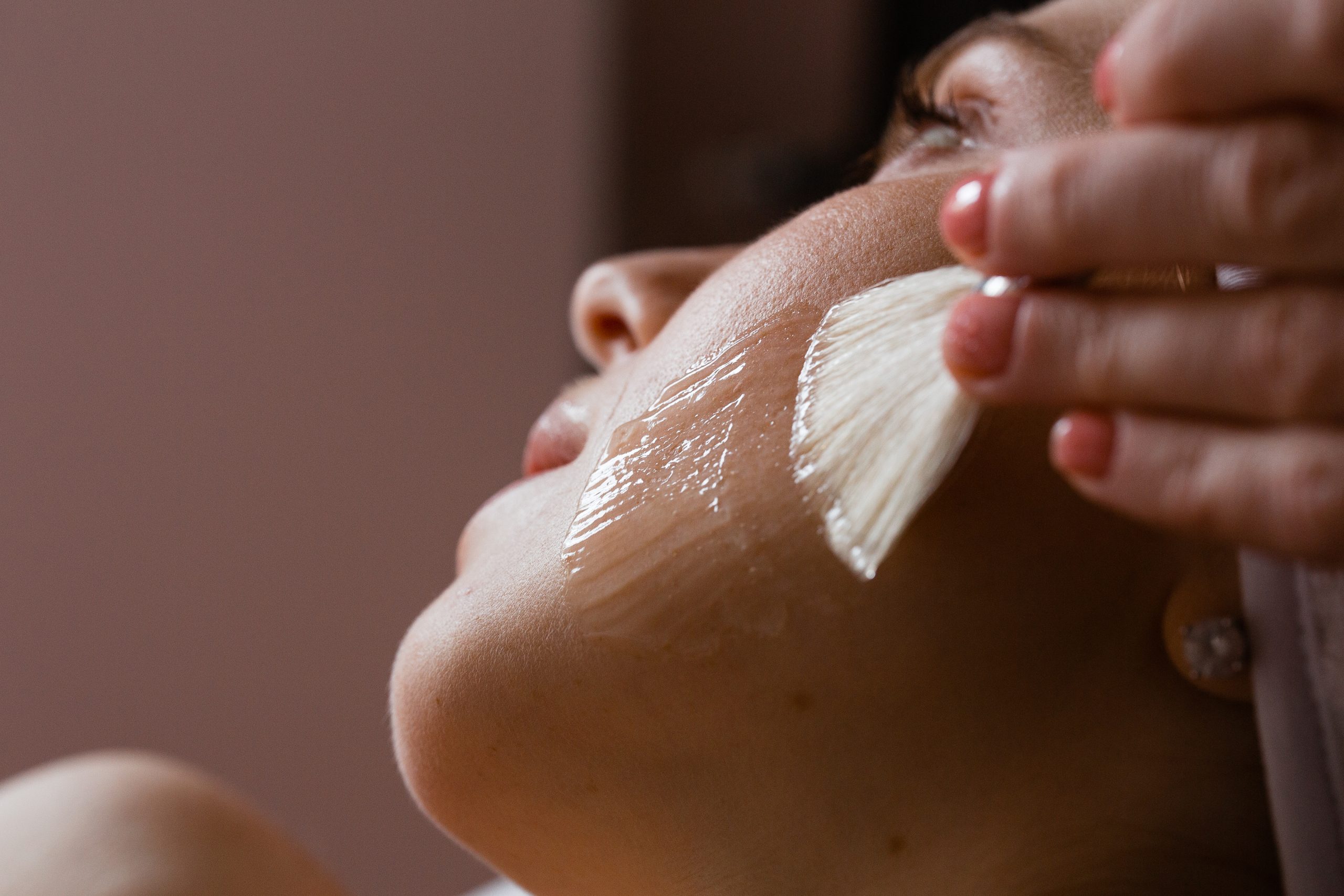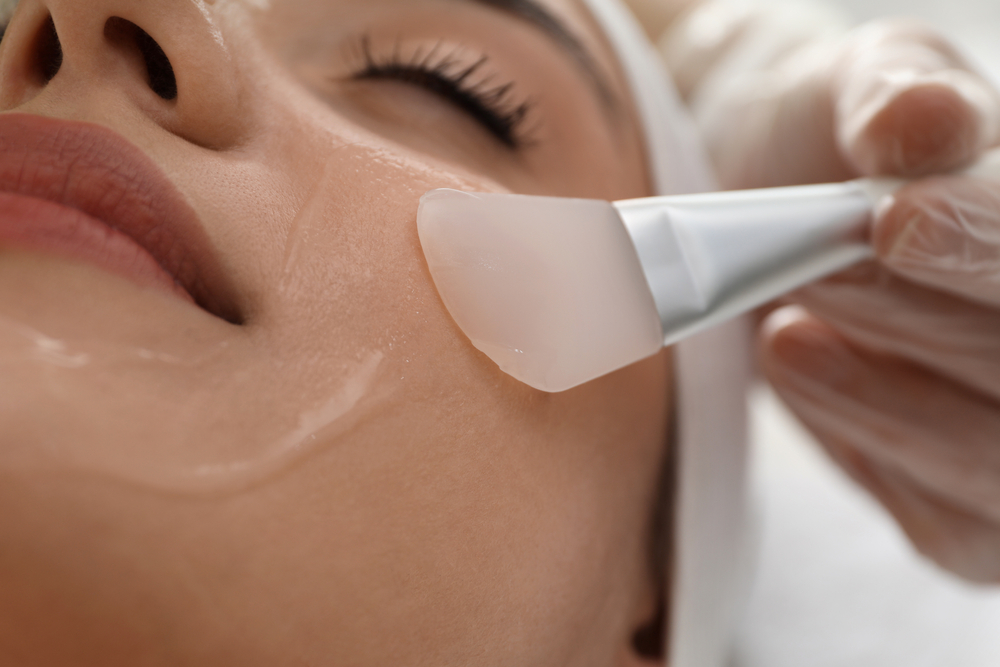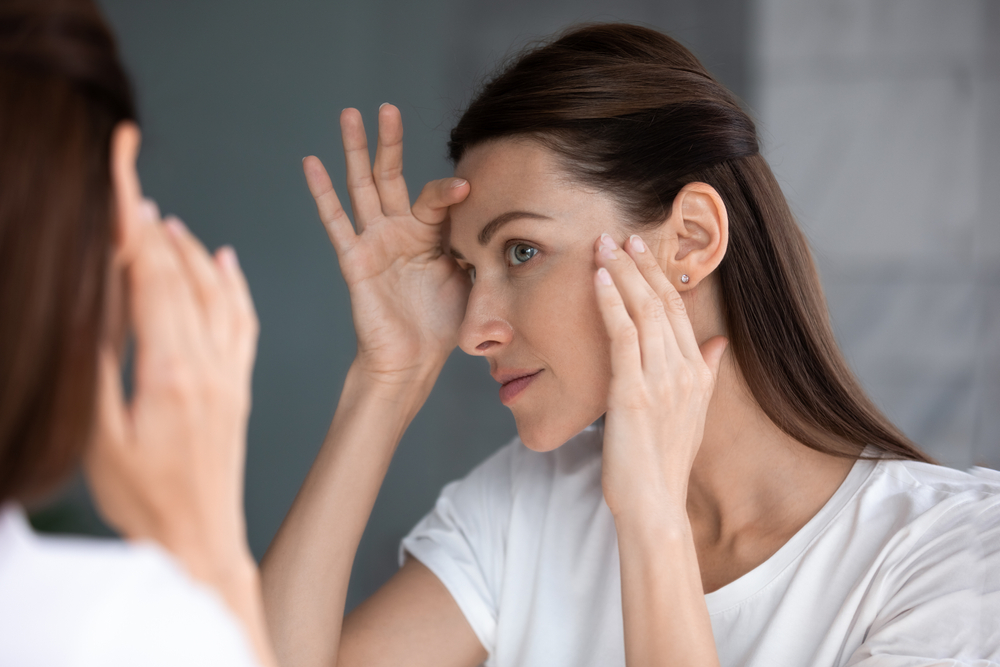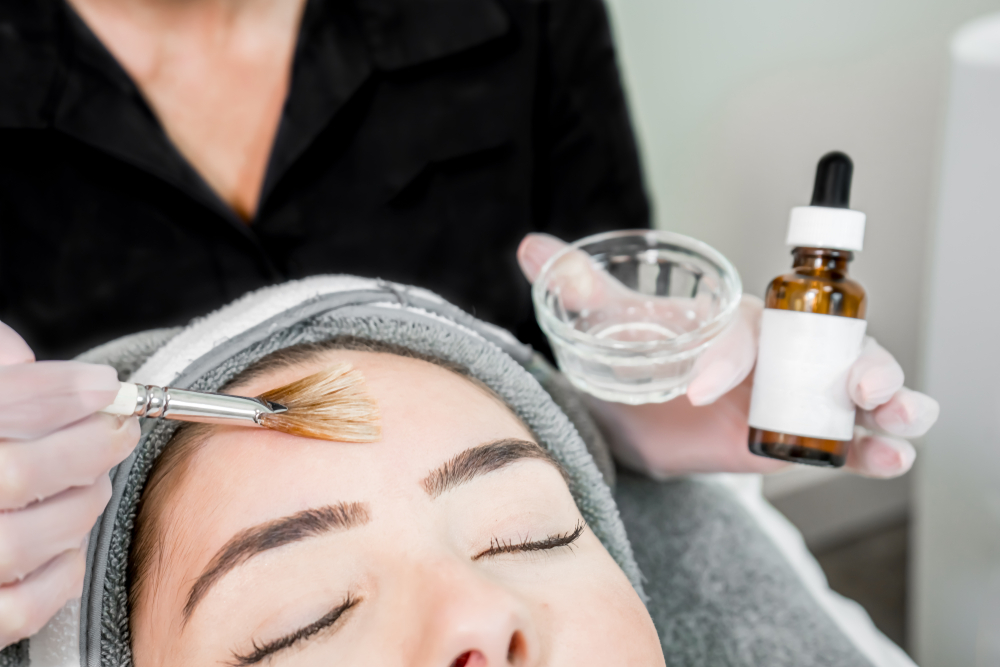
Common skin imperfections, like dull skin tone, fine lines, and acne scarring, can greatly affect how you feel about your appearance. They can make you feel less confident or older than your actual age.
A chemical peel is a great way to restore your confidence in your appearance. Keep reading to learn more about chemical peels, including ten benefits!
What is a Chemical Peel?
A chemical peel is a cosmetic procedure that resurfaces the upper layers of skin on the face, neck, or decolletage. It involves the controlled application of a chemical solution to the skin, which causes controlled exfoliation and peeling of the outermost layers of the skin.

Chemical peels stimulate skin renewal and regeneration, resulting in a smoother, more even complexion. They can reduce imperfections, like acne scars and hyperpigmentation, which may be causing you to be dissatisfied with your appearance.
Chemical peels should always be administered by a qualified dermatologist or skincare professional to ensure safety and optimal results, as they can cause adverse effects if not used correctly. The type and strength of a chemical peel should be tailored to your skin type, specific appearance concerns, and desired outcomes.
What Are The Types of Chemical Peels?
There are several different types of chemical peels, categorized based on the strength of the peel and the depth of penetration. They are:
Superficial Peels
A superficial peel penetrates only the epidermis, which is the outermost layer of the skin. They are typically used for mild exfoliation and refreshing the skin’s appearance.
Medium Peels
Medium peels penetrate the dermis, the middle layer of the skin. They are more effective at treating moderate skin imperfections, such as fine lines, wrinkles, and pigmentation issues, and may require a few days of downtime for recovery.
Deep Peels
A deep peel penetrates the deeper layers of the skin and is suitable for addressing more severe skin concerns, including deep wrinkles, scars, and significant sun damage. Because of its intensity, it may require sedation or anesthesia and usually has a much longer recovery period.
What Are The Benefits of Chemical Peels?
Rejuvenating your skin with a chemical peel offers several appearance-boosting benefits. Here are 10 of the most significant benefits of a chemical peel:
1. Exfoliation
Chemical peels effectively remove dead skin cells from the skin’s surface, promoting cellular turnover and revealing smoother, healthier skin.

2. Acne Control
Chemical peels can treat acne by unclogging pores, reducing inflammation, and controlling excess oil production.
2. Acne Control
Chemical peels can treat acne by unclogging pores, reducing inflammation, and controlling excess oil production.
3. Hyperpigmentation Reduction
Chemical peels can help lighten and reduce the appearance of hyperpigmentation, including sunspots, age spots, and melasma, by inhibiting melanin production.
4. Fine Lines and Wrinkles
Certain chemical peels, particularly medium and deep peels, stimulate collagen production, which can reduce the appearance of fine lines and wrinkles and improve skin texture.
5. Sun Damage Repair
Chemical peels can repair sun-damaged skin by targeting sunspots and other signs of premature aging caused by UV exposure.
6. Skin Tone Evenness
Chemical peels can improve skin tone by reducing pigmentation irregularities and promoting a more uniform complexion.
7. Scar Improvement
Chemical peels can improve the appearance of scars, including acne scars and minor surface irregularities, by encouraging new skin growth and collagen remodeling.
8. Pore Size Reduction
Chemical peels can reduce the appearance of enlarged pores by removing debris and excess oil, resulting in a smoother skin texture.
9. Increased Product Absorption
Following a chemical peel, the skin’s enhanced exfoliation allows for better absorption of skincare products, maximizing their effectiveness.
10. Boosted Confidence
The improvements in skin texture, tone, and appearance that can be achieved through chemical peels can boost your overall self-confidence and well-being.
What Happens During a Chemical Peel?
When you come in for a chemical peel, the procedure begins with a thorough cleaning of the area to be treated to remove any residual makeup, dirt, or oil. Some peels require that you temporarily discontinue using certain skincare products or medications that could increase sensitivity before the procedure.
The next step is the application of the chemical peel solution using a brush, sponge or cotton pad. Depending on the skin issues being addressed, the peel solution could contain ingredients like alpha hydroxy acids (AHAs), beta hydroxy acids (BHAs), trichloroacetic acid (TCA), or phenol.

The length of time that the chemical peel solution is left on your skin depends on your skin’s reaction and the specific issue being targeted. Chemical peels can be left on for a few minutes or up to twenty to thirty minutes.
After a chemical peel, your skin may appear red and feel tight. In the days following the peel, you will likely experience peeling and flaking.
For the best results, it is important to follow your post-peel care instructions closely. You should use gentle cleansers, moisturizers, and sunscreens, as well as avoid sun exposure and activities that could cause excessive sweating.
Whether you want to improve the look and texture of your skin or address facial imperfections like acne scarring or hyperpigmentation, a chemical peel can rejuvenate and refresh your appearance with fast, visible results!
Do you want to learn more about chemical peels? Schedule an appointment at Northeastern Eye Institute in Scranton, Clarks Summit, Dallas, Forty Fort, Hamlin, Honesdale, Hazelton, Peckville, Montrose, Mountaintop, Pocono Summit, Tuckhannock, Wilkes-Barre, PA, at 570-342-3145 today!